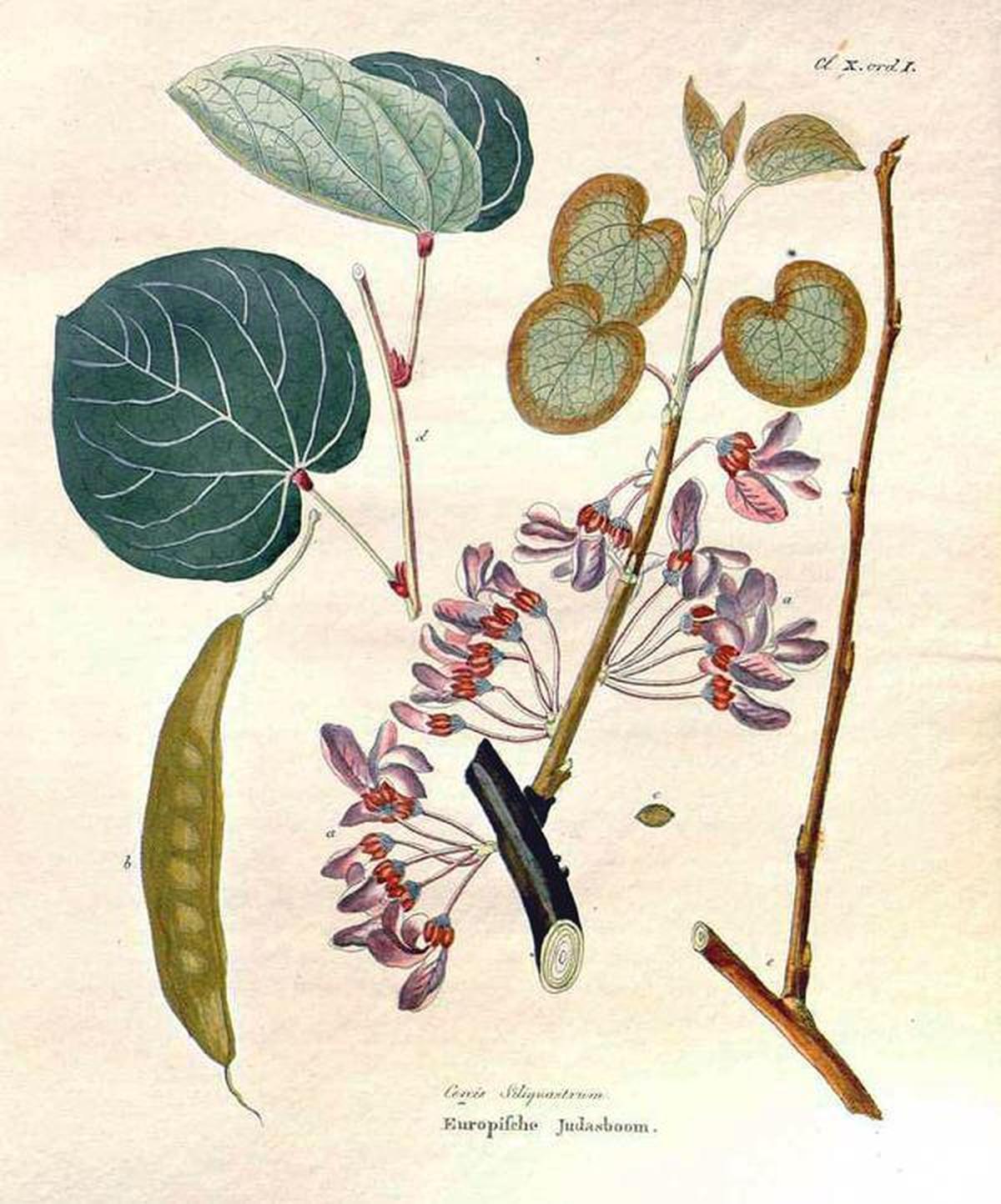Cercis siliquastrum L.
FabaceaeNativo del sudeste de Europa y sudoeste de Asia, presenta flores rosadas que brotan en grupos los meses de febrero y marzo, sobre el tronco o las ramas de años anteriores, antes de que se produzcan las hojas. Muy bien representado en el Parque de María Luisa, el árbol de Judas es el primero en florecer en Sevilla, apenas pasados los fríos del invierno. El nombre genérico cercis proviene del griego kerkis que significa lanzadera por la forma del fruto, debido a la semejanza de las vainas con esa herramienta de tejer. Su madera es muy resistente a los insectos. El específico siliquastrum significa “que crece en la arena”. Las hojas pueden comerse como verduras o en ensaladas y sus yemas florales se usan como condimento sucedáneo de las alcaparras. Estas hojas presentan un limbo con forma de corazón que explica uno de sus nombres comunes, árbol del amor, aunque también se le conoce como árbol de Judas porque, según la leyenda, el discípulo de Jesús, después de vender a su maestro, se ahorcó en uno de estos árboles: se dice incluso que la vaina recuerda a las monedas que Judas recibió en pago a su traición. Existe otra leyenda que dice que las lágrimas de Cristo cayeron desde el Cielo a este árbol y a partir de entonces surgieron las flores rosadas que lo caracterizan. También es probable que el nombre sea una incorrecta transcripción de Árbol de Judea, ya que en esta zona del mediterráneo oriental abunda esta especie. Desde ahí sería traído a Europa Occidental, existiendo en España numerosos cultivos de este tipo de árbol en el siglo XIX, y encontrándose asilvestrado en regiones como Valencia y Andalucía.
Procedencia
Europeo/MediterráneoCalendario
Hábitat
Morfología
 Árbol
Árbol
 Irregular
Irregular
 Simple
Simple
 Orbicular
Orbicular
 Alterna
Alterna
 Entero
Entero
 Auriculada
Auriculada
 Cordada
Cordada
 Obtuso
Obtuso
 Caduco
Caduco
